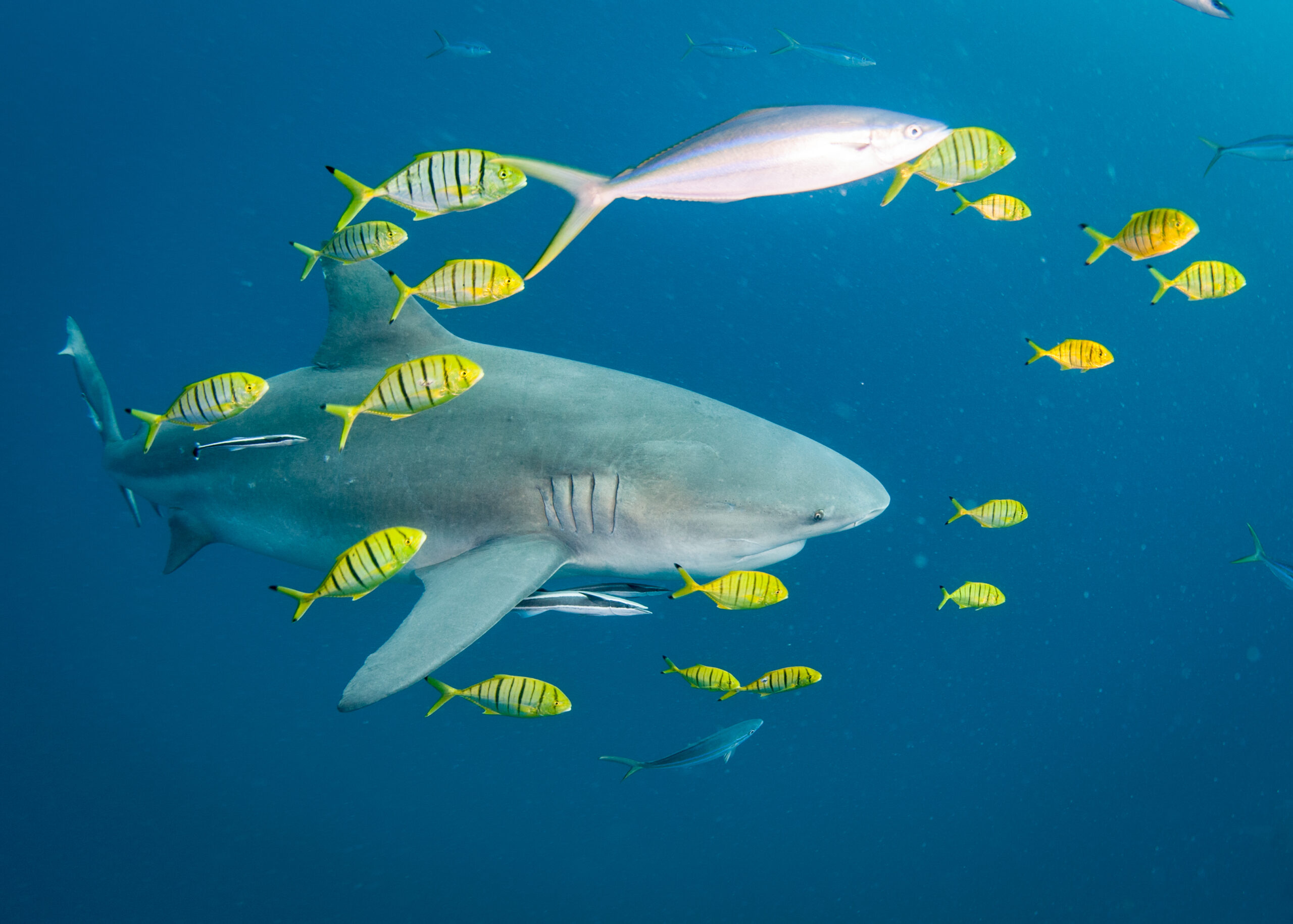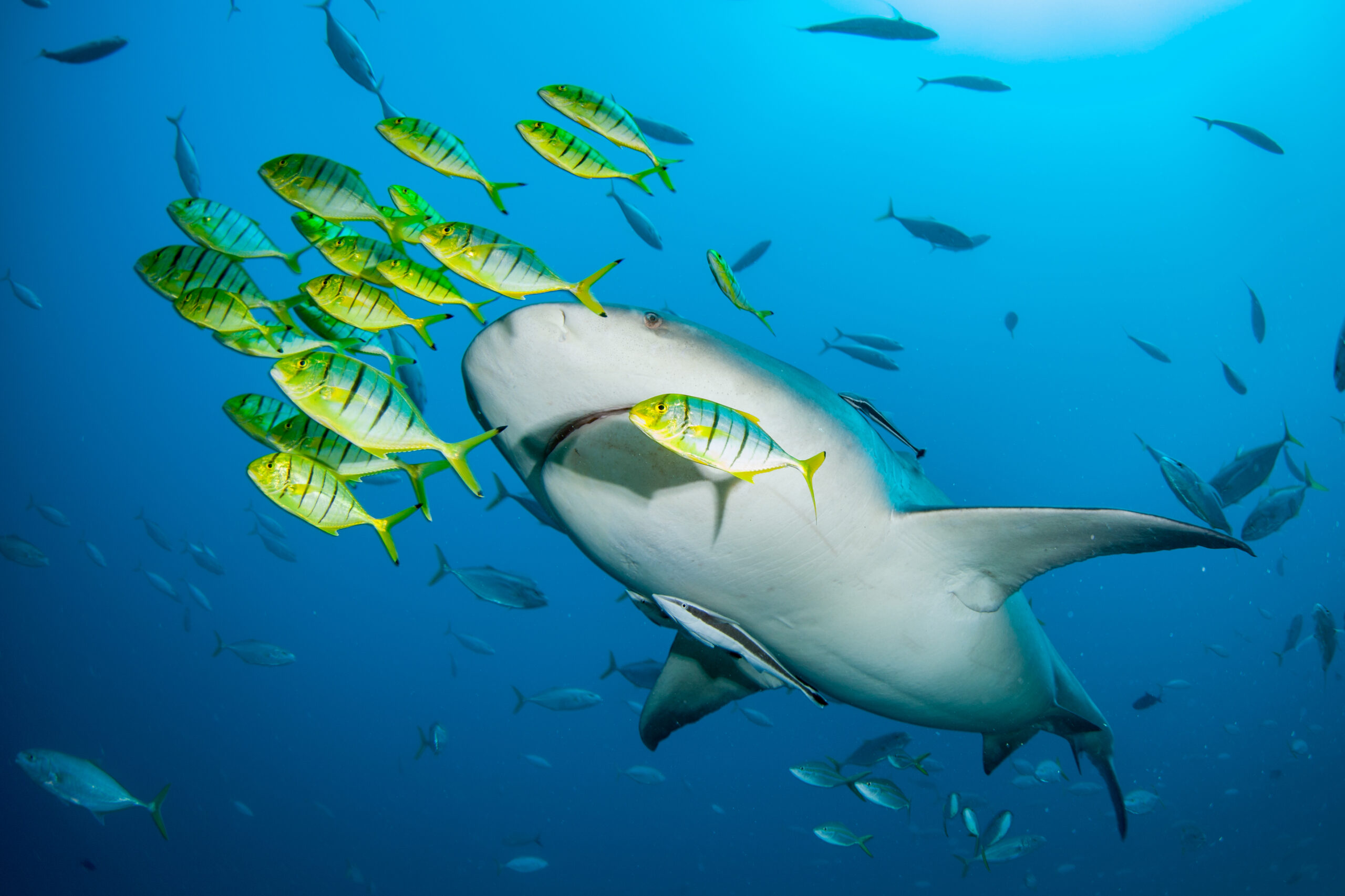An unlikely climate win for bull shark pups in Alabama?
Juvenile bull shark numbers have increased five-fold over a period of 20 years in Mobile Bay, an estuary on the coast of Alabama, USA. And the scientists who have been tracking the population have posited that the warming seas from our changing climate and a rapidly urbanising shoreline have increased the amount of suitable habitat available to these young sharks, an unexpected boon that has brought about a baby shark boom.
Coastal sharks live in an increasingly challenging environment. As ocean temperatures rise, so does the vulnerability of sharks that live in such close proximity to human beings. The accessibility of coastal shark habitats means that these animals are always first at risk of overfishing and they suffer the effects of habitat degradation, the arrival of invasive species and a litany of inputs from land-based sources of pollution. This confluence of issues can force sharks to seek more suitable waters; in the case of tiger sharks, warmer seas have seen populations shift polewards. If we want to manage healthy shark populations in a changing world, scientists say that we need to understand what habitats are ‘suitable’ for different shark species and project how these may change.
The Mobile River Basin is a biodiversity hotspot where the freshwaters of the Mobile and Tenshaw rivers drain into Mobile Bay and mix with the salty ocean waters of the Gulf of Mexico. In this shallow, ever-shifting estuary, an array of fish and large predators have found their home. However, sea surface temperatures have risen by an average of 0.05 °C annually over the past 40 years in the northern Gulf of Mexico. At the same time, the human footprint on the shores of coastal Alabama has sprawled, changing land cover from natural vegetation to urbanised and developed, with rising tourism and a human population that is becoming denser along the coast. The result? More salty water, more freshwater inflow, warmer waters and a higher influx of nutrients from land. A changing coast in one of the highest and most intense rainfall areas in the entire USA means that the quality of water in stormwater run-off is also set to shift. And the final straw that (may) just break this environment’s back? Mobile Bay has lost up to 88% of its submerged aquatic vegetation. This further reduces the capacity of the natural system to filter the nutrients loaded into the water by run-off from land-based activities.

Bull shark swimming. Photo © James Loudon
Bull sharks are extraordinary predators that have the capacity to move between saline and freshwater environments. Their ability to tolerate salinities lower than other sharks can gives them a baby-rearing edge; they can use estuaries that would be otherwise uninhabitable as safe, relatively competition-free nurseries for their growing pups. The coastal waters of Alabama are particularly important for these sharks; young bull sharks dominate these waters compared to the age cohorts recorded in other populations in the Mississippi and north-western Florida.
The scientists who tracked the population in Mobile Bay from 2003 to 2020 found that the rising sea surface temperatures are the primary drivers of increased suitable habitat available to young bull sharks here. Understanding this is critical for shark conservation; the rapidity of climate-induced changes in the environment means that most sharks won’t be able to evolve quickly enough to adapt. But behavioural changes, and flexibility in distribution, are the quicker responses some species might be able to make. The species that can move, and are more flexible in their behaviour, are more likely to respond in time to our changing climate.
At first glance, these results seem like a climate-linked win. For a change, there is a shark population that appears to be not only persisting, but growing. But the increasing numbers of predatory sharks will have impacts on the wider ecosystem. And an increase in abundance doesn’t really reflect the individual-level condition of these animals; warmer waters can be metabolically stressful. Young bull sharks seem to have a high thermal tolerance, but this may not be the same for every life stage. Climate change might affect sharks of different ages differently. Bull sharks would still need to be protected and managed across a range of suitable habitats and temperature ranges if we are to conserve them across different age cohorts. Mobile Bay is also geographically constricted; as waters continue to warm, will these baby bull sharks hit an upper thermal tolerance limit? And where could they move to then? Scientists suggest that they may seek cooler waters further up rivers, but this would challenge their salinity thresholds too.

Bull shark and entourage. Photo © James Loudon
Gathering the most basic information about how sharks live has never been more critical; it’s only with these data that scientists can begin to postulate what might happen in the (rapidly approaching) future. And as this study shows, in most cases that climate future really is now. Interestingly, these coast-hugging bull sharks weren’t deterred by the increasing urbanisation of the shores they swim past. Other scientists have shown similar results; in Florida, great hammerhead sharks, bull sharks and nurse sharks are considered to be ‘urban adapters’ as they don’t give the high-rise-riddled shoreline a wide berth. However, as their numbers increase, the nature of their interactions with human beings are set to change. Disgruntled fishers are less likely to support shark conservation efforts in the face of losing hooked fish to ‘thieving’ sharks, and so working together with these important stakeholders to address their concerns and increase their knowledge about the role of sharks in the ecosystem is a priority that parallels our approach to the climate change challenge.
There is hope to be found in this story, somewhere. Young bull sharks are resilient and not only manage to survive the rapid changes in their nursery, but benefit from them. However, it is our ability to grapple with complexity and responsibility that will determine how they fare in the future. Unchecked urbanisation, rapid and catastrophic warming and dwindling support for shark conservation measures just as shark numbers begin to bounce back could very quickly see the demise of this self-same population. Continuing to monitor these sharks (and others like them), and predict what the future might hold for them, needs to be on our research radar.
** References:
Mullins L, Cartwright J, Dykstra SL, Evans K, Mareska J, Matich P, Plumlee JD, Sparks E and Drymon JM. 2024. Warming waters lead to increased habitat suitability for juvenile bull sharks Carcharhinus leucas. Scientific Reports 14(1): 4100. Read here
Hammerschlag N, Gutowsky LFG, Rider MJ, Roemer R and Gallagher AJ. 2022. Urban sharks: Residency patterns of marine top predators in relation to a coastal metropolis. Mar. Eco. Prog. Ser. 691: 1–17. Read here
